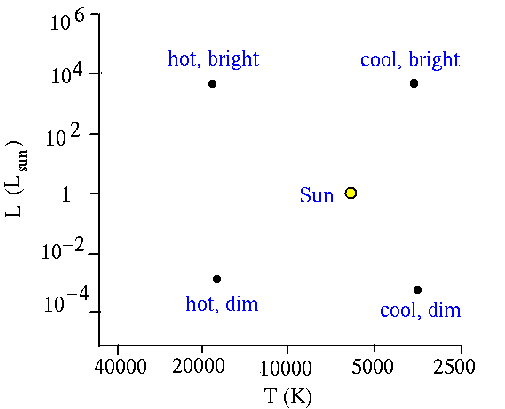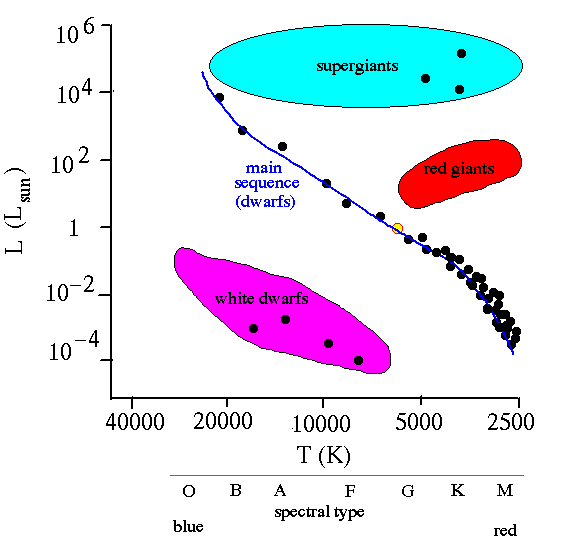The Hertzsprung-Russell Diagram


| Gene Smith's Astronomy Tutorial The Hertzsprung-Russell Diagram |
 |

The Hertzsprung-Russell Diagram
The Hertzsprung-Russell Diagram, pioneered independently by Elnar Hertzsprung and Henry Norris Russell, plots Luminosity as a function of Temperature for stars. Below is the Hertzsprung-Russell (HR) Diagram for stars near the sun:

It is readily apparent that the H-R Diagram is not uniformly populated, but that stars preferentially fall into certain regions of the diagram. The majority of stars fall along a curving diagonal line called the main sequence but there are other regions where many stars also fall.
The H-R Diagram may be partially understood in terms of the luminosity for a object emitting thermal radiation:
If all objects in the H-R Diagram were the same size then all objects would lie along a diagonal line of slope = 2 in this logarithmic plot. Schematically, stars fall into regions shown below with respect to the sun.

Consider stars cooler than, but brighter than the sun. These must be very large stars (Red Giants), whereas stars bluer than the sun but less luminous must be quite small ( White Dwarfs).

We will see that the H-R Diagram is an extremely useful way to follow the changes that take place as a star evolves. Most stars are on the Main Sequence because that is where stars spend most of their lives, burning hydrogen to helium through nuclear reactions. As stars live out their lives, changes in the structure of the star are reflected in changes in stars temperatures, sizes and luminosities, which cause them to move in tracks on the H-R Diagram.